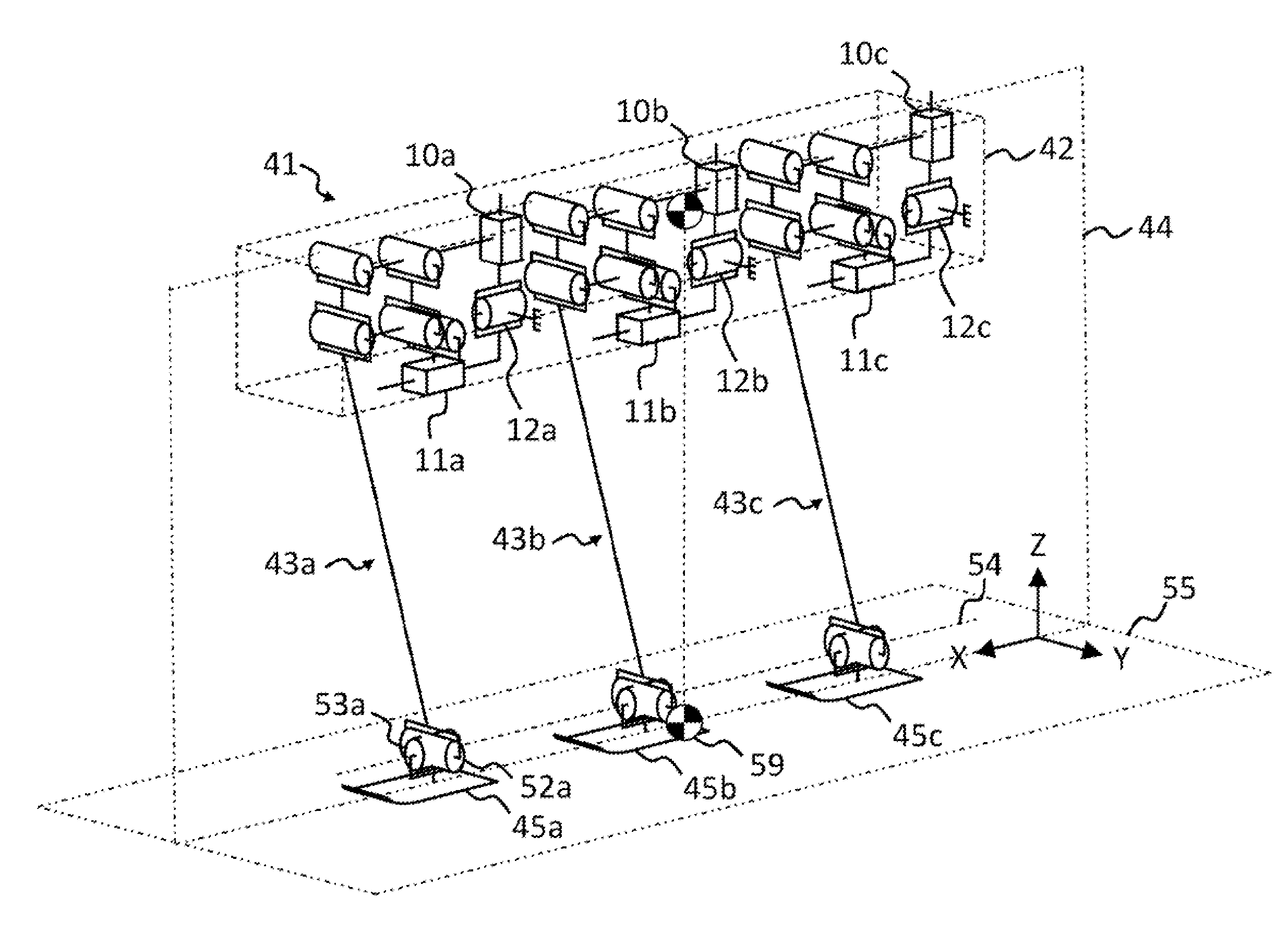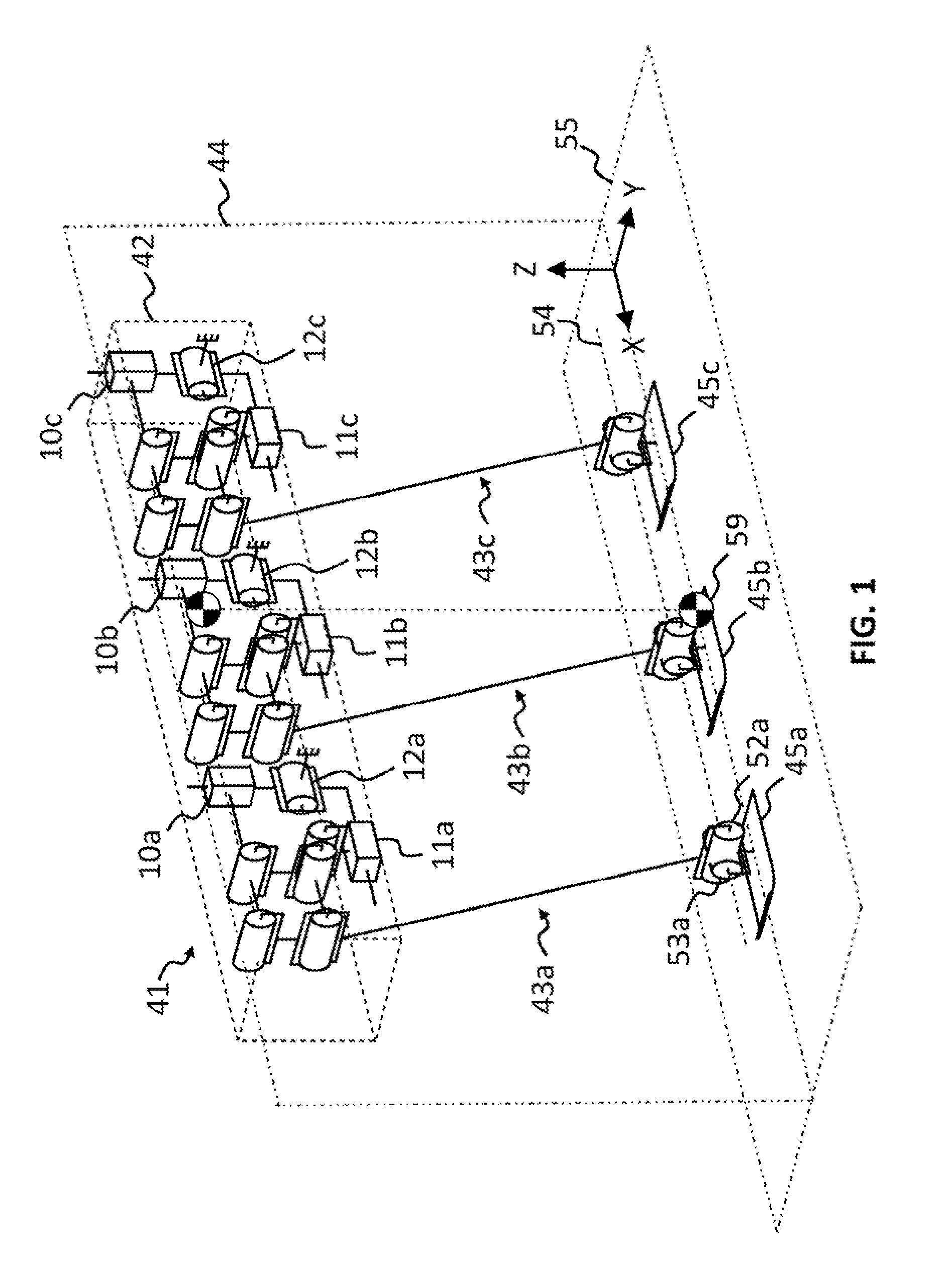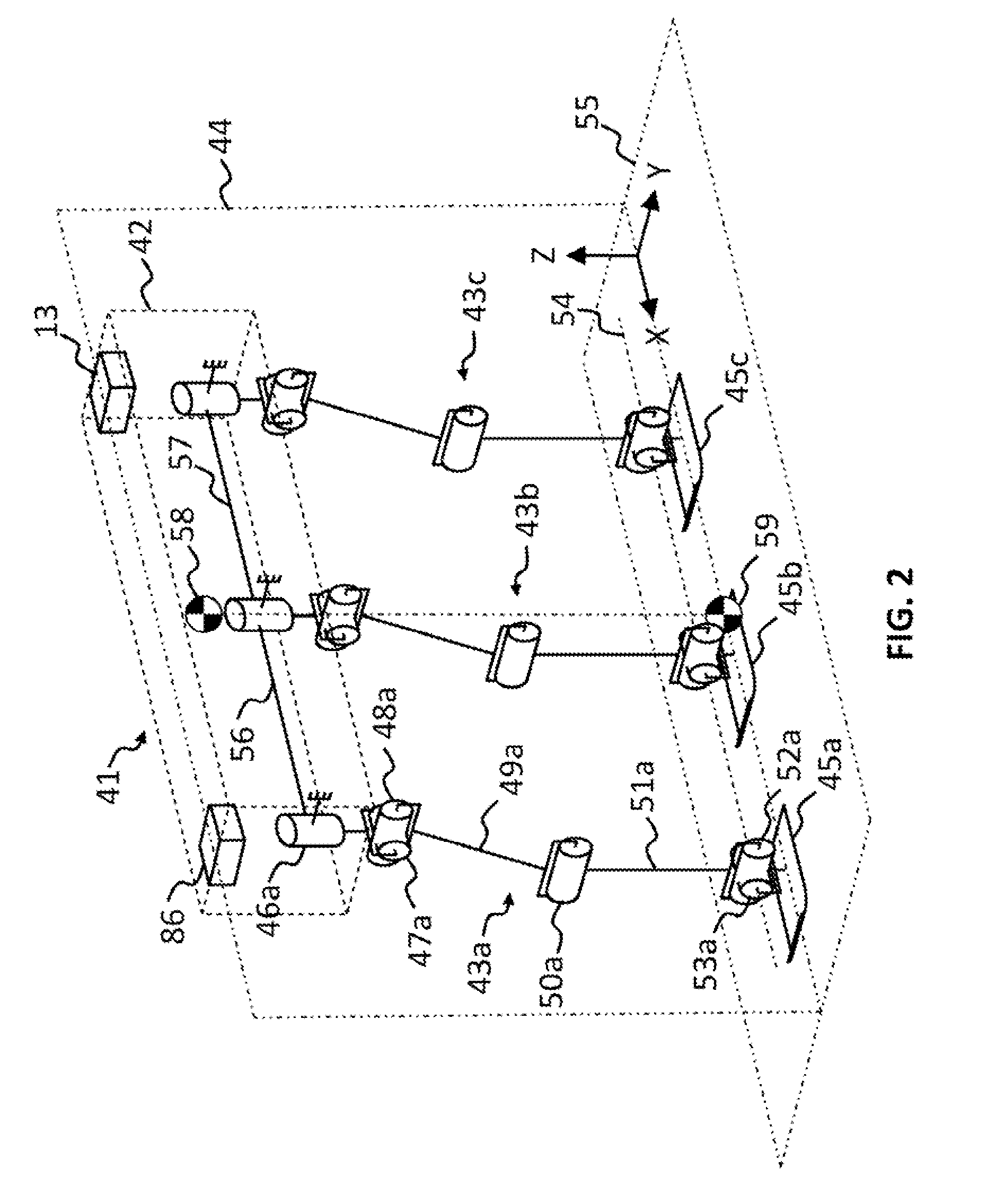In-Line Legged Robot Vehicle and Method for Operating
a robot and in-line technology, applied in the field of legged mobile robots, can solve the problems of increasing the risk of overturning, reducing the usefulness of vehicles, so as to reduce body motion and improve mobility
- Summary
- Abstract
- Description
- Claims
- Application Information
AI Technical Summary
Benefits of technology
Problems solved by technology
Method used
Image
Examples
Embodiment Construction
The invention will now be explained with reference to a single track or in-line three legged mobile robot as a specific embodiment of the single track multi-legged mobile robot. Referring now to the drawings and, more particularly, to FIGS. 1-3 thereof, there is shown a single track or in-line legged mobile robot, generally designated 41, including a body or frame, generally designated 42, and three identical leg mechanisms, generally designated 43, attached one behind the other, substantially parallel to the major axis of the frame 42, defining a forward / backward direction of travel along planes 44 and 55. By convention, the left side of the page is the front side and forward direction, the right side of the page is the rear side, into the page is the right side, and out of the page is the left side of the robot 41. The construction of each leg mechanism 43 is not directly relevant to the present invention, the present invention being directed to the method and manner in which the ...
PUM
 Login to View More
Login to View More Abstract
Description
Claims
Application Information
 Login to View More
Login to View More - R&D
- Intellectual Property
- Life Sciences
- Materials
- Tech Scout
- Unparalleled Data Quality
- Higher Quality Content
- 60% Fewer Hallucinations
Browse by: Latest US Patents, China's latest patents, Technical Efficacy Thesaurus, Application Domain, Technology Topic, Popular Technical Reports.
© 2025 PatSnap. All rights reserved.Legal|Privacy policy|Modern Slavery Act Transparency Statement|Sitemap|About US| Contact US: help@patsnap.com



